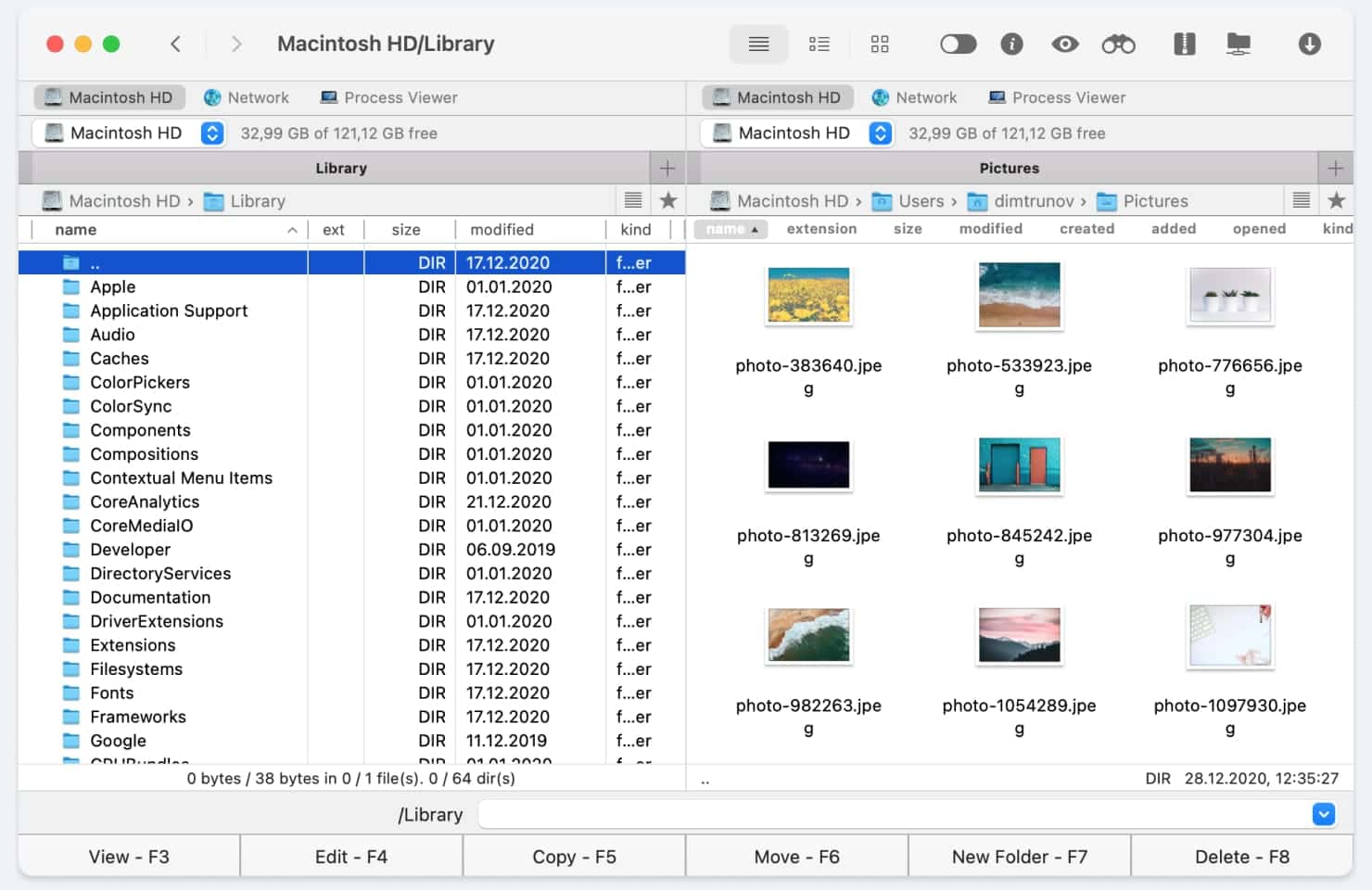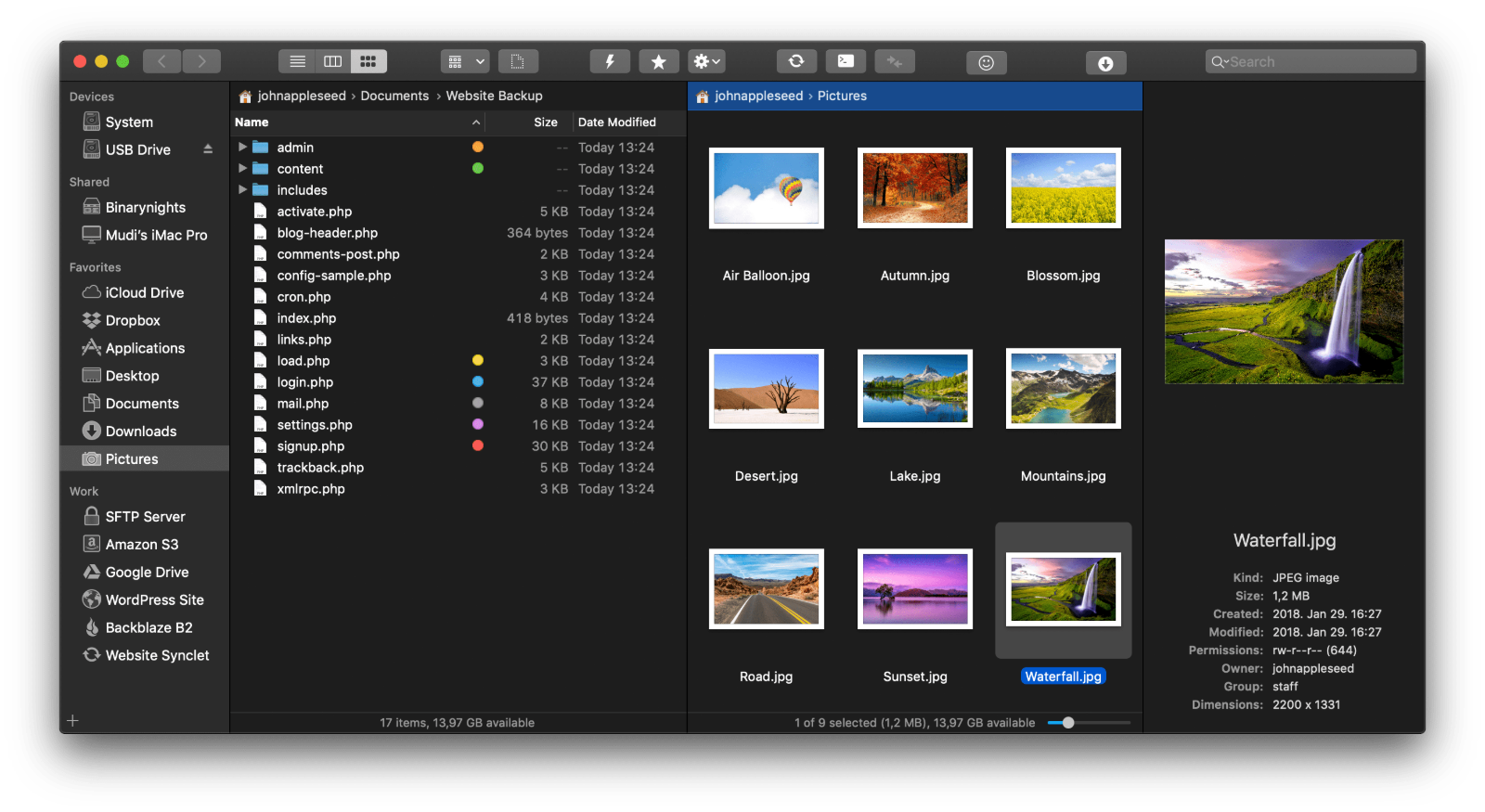
Download FireFTP for Windows now from Softonic: 100% safe and virus free. More than 215 downloads this month. Download FireFTP latest version 2021. In the Cloud Shell, create a web app in the myAppServicePlan App Service plan with the az webapp create command. In the following example, replace app-name with a globally unique app name (valid characters are a-z, 0-9, and -). The runtime is set to PHP 7.4. To see all supported runtimes, run az webapp list-runtimes. Manage your files quickly across local drives and remote servers with ease. ForkLift is a robust FTP/SFTP/WebDAV/Amazon S3/Backblaze B2/Google Drive/Rackspace Cloud Files client and a powerful and versatile file manager. An FTP server is what an FTP client connects to for file transfers. There are lots of FTP servers available but many of them are only usable at a cost. Below is a list of the very best freeware FTP server programs that run on Windows, macOS, and Linux—you can download and use them to share files as often as you like without paying a dime. Core Improved: add HTTP/FTP multi-connection download function Core Improved: add HTTP/FTP multi-connection download disk cache function Core Bugfix: fix the bug in 0.74 that in rare situation program will crash due to file operation v0.74 2006.10.14 GUI Improved: add default settings of view size and list col width for common screen resolutions.
Sep 13, 2021 FileZilla A free open source file transfer system that includes FTP, SFTP, and FTPS and runs on Windows, Linux, and macOS. ZFTPServer Freeware Integrates AD user accounts and manages file transfers with FTP, FTPS, SFTP, TFTP, and HTTPS. Feel free to download the FTP client from the Cyberduck website or you have options for downloads on the Microsoft and Mac App Stores. This is free, open source software but you can get rid of donation prompts and even receive a registration key if you’d like to donate more than $10 to the developers. Best free ftp app for Mac? Posted by 12 days ago. Best free ftp app for Mac? I need an ftp pp for Mac, where is the best place to grab one for free please? Log in or sign up to leave a comment. FileZilla is undoubtedly one of the most popular and best FTP Clients for Mac. It is an open-source and free program. FileZilla is one of the oldest FTP clients in the market, with an outdated interface. However, the working mechanism is easy to understand for anyone.
-->Azure App Service provides a highly scalable, self-patching web hosting service. This quickstart tutorial shows how to deploy a PHP app to Azure App Service on Windows.
Azure App Service provides a highly scalable, self-patching web hosting service. This quickstart tutorial shows how to deploy a PHP app to Azure App Service on Linux.
You create the web app using the Azure CLI in Cloud Shell, and you use Git to deploy sample PHP code to the web app.
You can follow the steps here using a Mac, Windows, or Linux machine. Once the prerequisites are installed, it takes about five minutes to complete the steps.
If you don't have an Azure subscription, create a free account before you begin.
Prerequisites
To complete this quickstart:
Download the sample locally
In a terminal window, run the following commands. This will clone the sample application to your local machine, and navigate to the directory containing the sample code.
Run the app locally
Run the application locally so that you see how it should look when you deploy it to Azure. Open a terminal window and use the php command to launch the built-in PHP web server.
Open a web browser, and navigate to the sample app at http://localhost:8080.
You see the Hello World! message from the sample app displayed in the page.
In your terminal window, press Ctrl+C to exit the web server.
Use Azure Cloud Shell
Azure hosts Azure Cloud Shell, an interactive shell environment that you can use through your browser. You can use either Bash or PowerShell with Cloud Shell to work with Azure services. You can use the Cloud Shell preinstalled commands to run the code in this article without having to install anything on your local environment.
To start Azure Cloud Shell:
| Option | Example/Link |
|---|---|
| Select Try It in the upper-right corner of a code block. Selecting Try It doesn't automatically copy the code to Cloud Shell. | |
| Go to https://shell.azure.com, or select the Launch Cloud Shell button to open Cloud Shell in your browser. | |
| Select the Cloud Shell button on the menu bar at the upper right in the Azure portal. |
To run the code in this article in Azure Cloud Shell:
Start Cloud Shell.
Select the Copy button on a code block to copy the code.
Paste the code into the Cloud Shell session by selecting Ctrl+Shift+V on Windows and Linux or by selecting Cmd+Shift+V on macOS.
Select Enter to run the code.
Configure a deployment user
FTP and local Git can deploy to an Azure web app by using a deployment user. Once you configure your deployment user, you can use it for all your Azure deployments. Your account-level deployment username and password are different from your Azure subscription credentials.
To configure the deployment user, run the az webapp deployment user set command in Azure Cloud Shell. Replace <username> and <password> with a deployment user username and password.
- The username must be unique within Azure, and for local Git pushes, must not contain the ‘@’ symbol.
- The password must be at least eight characters long, with two of the following three elements: letters, numbers, and symbols.
The JSON output shows the password as null. If you get a 'Conflict'. Details: 409 error, change the username. If you get a 'Bad Request'. Details: 400 error, use a stronger password.
Record your username and password to use to deploy your web apps.
Create a resource group
A resource group is a logical container into which Azure resources, such as web apps, databases, and storage accounts, are deployed and managed. For example, you can choose to delete the entire resource group in one simple step later.
In the Cloud Shell, create a resource group with the az group create command. The following example creates a resource group named myResourceGroup in the West Europe location. To see all supported locations for App Service in Free tier, run the az appservice list-locations --sku FREE command.

You generally create your resource group and the resources in a region near you.
When the command finishes, a JSON output shows you the resource group properties.
Create a resource group
A resource group is a logical container into which Azure resources, such as web apps, databases, and storage accounts, are deployed and managed. For example, you can choose to delete the entire resource group in one simple step later.
In the Cloud Shell, create a resource group with the az group create command. The following example creates a resource group named myResourceGroup in the West Europe location. To see all supported locations for App Service on Linux in Basic tier, run the az appservice list-locations --sku B1 --linux-workers-enabled command.
You generally create your resource group and the resources in a region near you.
When the command finishes, a JSON output shows you the resource group properties.
Create an Azure App Service plan
In the Cloud Shell, create an App Service plan with the az appservice plan create command.

The following example creates an App Service plan named myAppServicePlan in the Free pricing tier:
When the App Service plan has been created, the Azure CLI shows information similar to the following example:
Create a web app
In the Cloud Shell, create a web app in the myAppServicePlan App Service plan with the az webapp create command.
In the following example, replace <app-name> with a globally unique app name (valid characters are a-z, 0-9, and -). The runtime is set to PHP|7.4. To see all supported runtimes, run az webapp list-runtimes.
Note
The stop-parsing symbol (--%), introduced in PowerShell 3.0, directs PowerShell to refrain from interpreting input as PowerShell commands or expressions.
When the web app has been created, the Azure CLI shows output similar to the following example:
You've created an empty new web app, with git deployment enabled.
Note

The URL of the Git remote is shown in the deploymentLocalGitUrl property, with the format https://<username>@<app-name>.scm.azurewebsites.net/<app-name>.git. Save this URL as you need it later.
Browse to your newly created web app. Replace <app-name> with your unique app name created in the prior step.
Free Ftp App For Mac
Here is what your new web app should look like:
Push to Azure from Git
Back in the local terminal window, add an Azure remote to your local Git repository. Replace <deploymentLocalGitUrl-from-create-step> with the URL of the Git remote that you saved from Create a web app.
Push to the Azure remote to deploy your app with the following command. When Git Credential Manager prompts you for credentials, make sure you enter the credentials you created in Configure a deployment user, not the credentials you use to sign in to the Azure portal.
This command may take a few minutes to run. While running, it displays information similar to the following example:
Browse to the app
Browse to the deployed application using your web browser.
The PHP sample code is running in an Azure App Service web app.
Congratulations! You've deployed your first PHP app to App Service.
Update locally and redeploy the code
Using a local text editor, open the index.php file within the PHP app, and make a small change to the text within the string next to echo:
In the local terminal window, commit your changes in Git, and then push the code changes to Azure.
Best Free Ftp App For Mac
Once deployment has completed, return to the browser window that opened during the Browse to the app step, and refresh the page.
Manage your new Azure app
Free Ftp Server Software For Mac

Go to the Azure portal to manage the web app you created. Search for and select App Services.
Select the name of your Azure app.
Your web app's Overview page will be displayed. Here, you can perform basic management tasks like Browse, Stop, Restart, and Delete.
The web app menu provides different options for configuring your app.
Clean up resources
In the preceding steps, you created Azure resources in a resource group. If you don't expect to need these resources in the future, delete the resource group by running the following command in the Cloud Shell:
Free Ftp App For Mac
This command may take a minute to run.